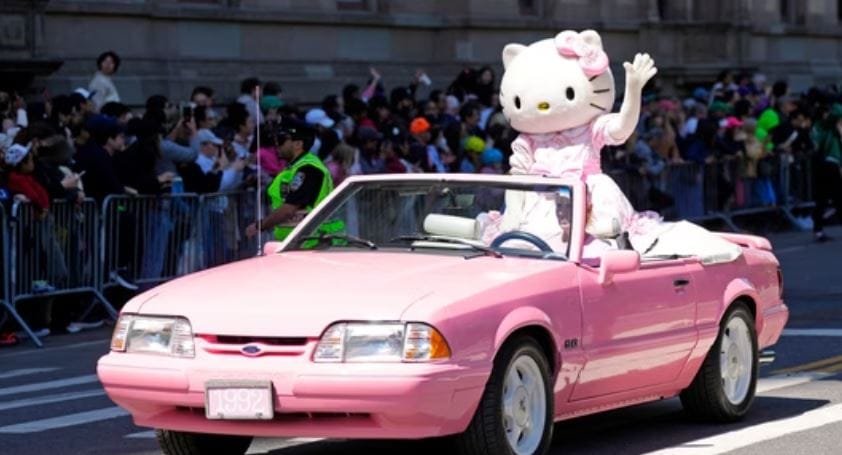In a shocking twist that has shattered childhood memories worldwide, the beloved character Hello Kitty, an icon of Japanese pop culture, is not a feline after all. This revelation has ignited a global debate, challenging long-held assumptions about the character’s true identity.
Hello Kitty’s Identity Crisis: A Girl, Not a Cat
The truth behind Hello Kitty’s species was unveiled a decade ago by anthropologist Christine R. Yano, who confirmed that the character is, in fact, a young British girl. This revelation, corroborated by Sanrio, the company behind Hello Kitty, has sparked a wave of disbelief among fans who have long associated the character with its cat-like features.
Yano clarified, “She’s a cartoon character, a little girl, a friend. But she is not a cat. She’s never depicted on all fours. She walks and sits like a two-legged creature.” This explanation, however, has not quelled the controversy, as many struggle to reconcile the character’s appearance with its newfound human identity.
Cultural Context and Global Appeal
Hello Kitty’s British origins can be traced back to the 1970s when the Japanese held a fascination with British culture. The character’s biography, depicting a quaint suburban life in London, was carefully crafted to appeal to the tastes of the time. This strategic branding, coupled with Hello Kitty’s universal charm, has propelled the character to global stardom, transcending cultural boundaries and captivating audiences of all ages.
Marketing Implications and Fan Reactions
The revelation of Hello Kitty’s true identity has sparked a flurry of discussions about the character’s marketing and branding. Some argue that the company has deliberately misled consumers, while others defend Sanrio’s right to create fictional characters with their own unique backstories. Regardless of the debate, Hello Kitty’s enduring popularity remains undiminished, with fans continuing to embrace the character’s message of friendship and positivity.
Summary
The bombshell revelation that Hello Kitty is not a cat has sent shockwaves across the globe, challenging long-held perceptions and sparking a debate about the character’s true identity. Despite the controversy, Hello Kitty’s enduring appeal and cultural significance remain undeniable.
Key Learning Points
| Point | Description |
|---|---|
| Hello Kitty’s True Identity | Hello Kitty is a young British girl, not a cat, as confirmed by anthropologist Christine R. Yano and Sanrio. |
| Cultural Context | The character’s British origins reflect Japan’s fascination with British culture in the 1970s. |
| Global Appeal | Hello Kitty’s universal charm has transcended cultural boundaries, captivating audiences worldwide. |
| Controversy and Debate | The revelation of Hello Kitty’s true identity has sparked a debate about the character’s marketing and branding. |
| Enduring Popularity | Despite the controversy, Hello Kitty’s popularity remains undiminished, with fans continuing to embrace the character’s positive message. |

Roshan Kumar Sahoo is a multifaceted journalist with expertise in entertainment-related news, sports , tech, and international relations. His ability to navigate these diverse fields allows him to provide readers with a rich blend of content, from the latest entertainment buzz to cutting-edge sports technology and insightful analysis of global affairs. Roshan’s writing is characterized by its depth, accuracy, and engaging style, making him a trusted voice across multiple domains.



